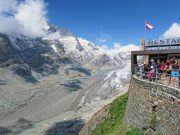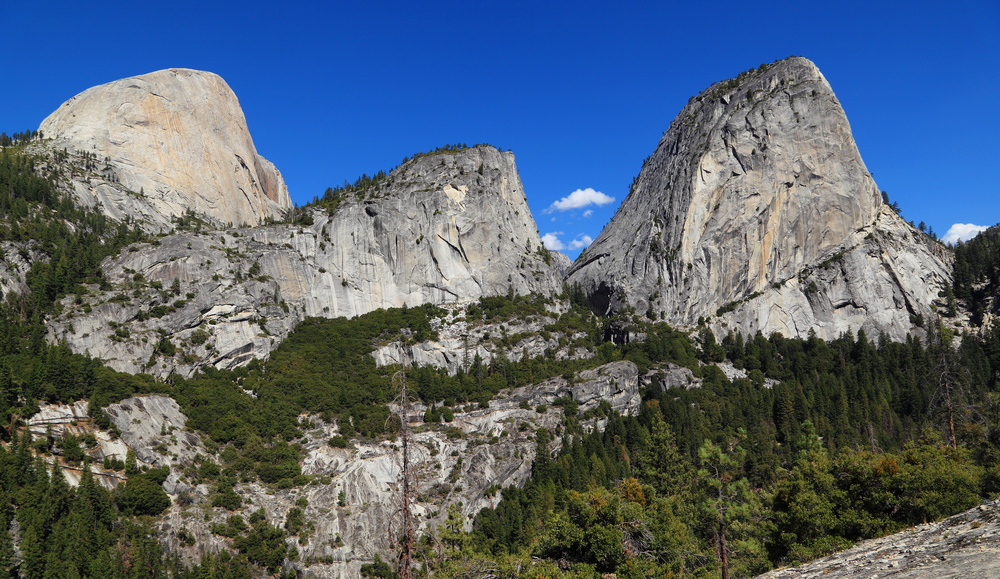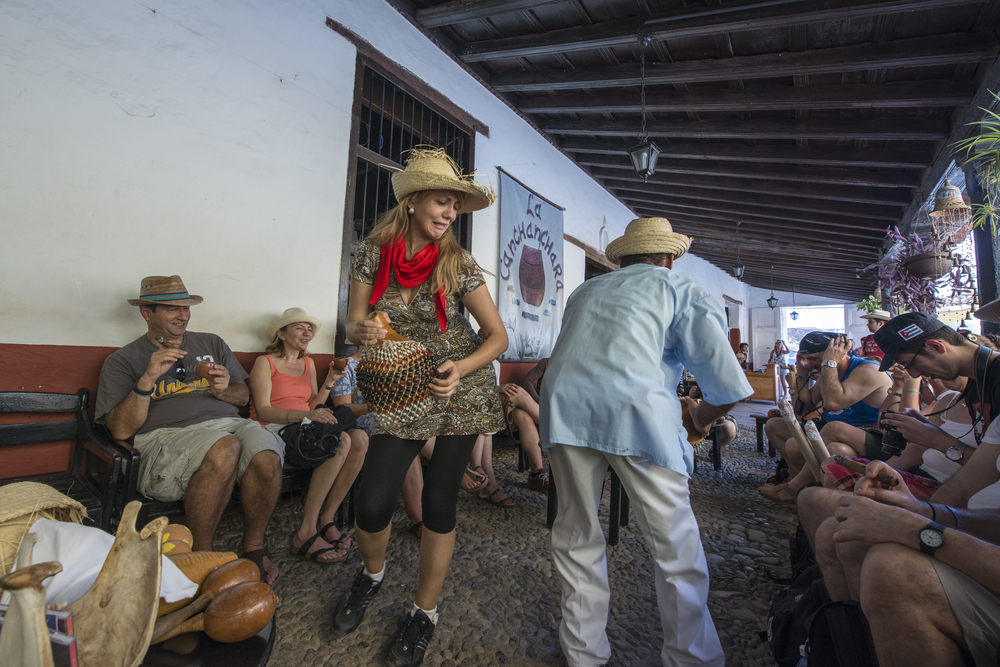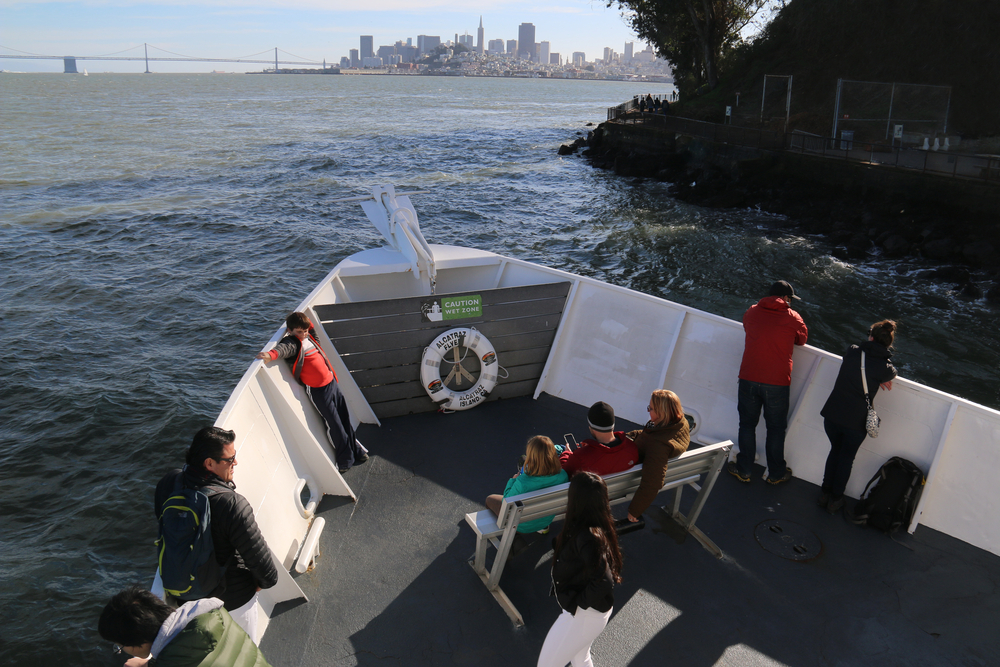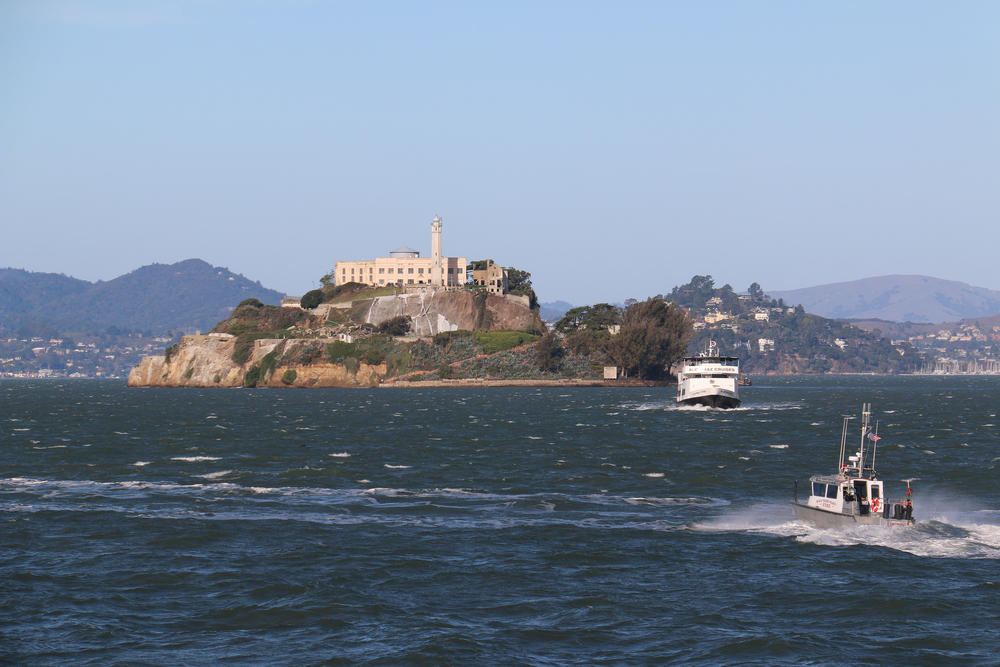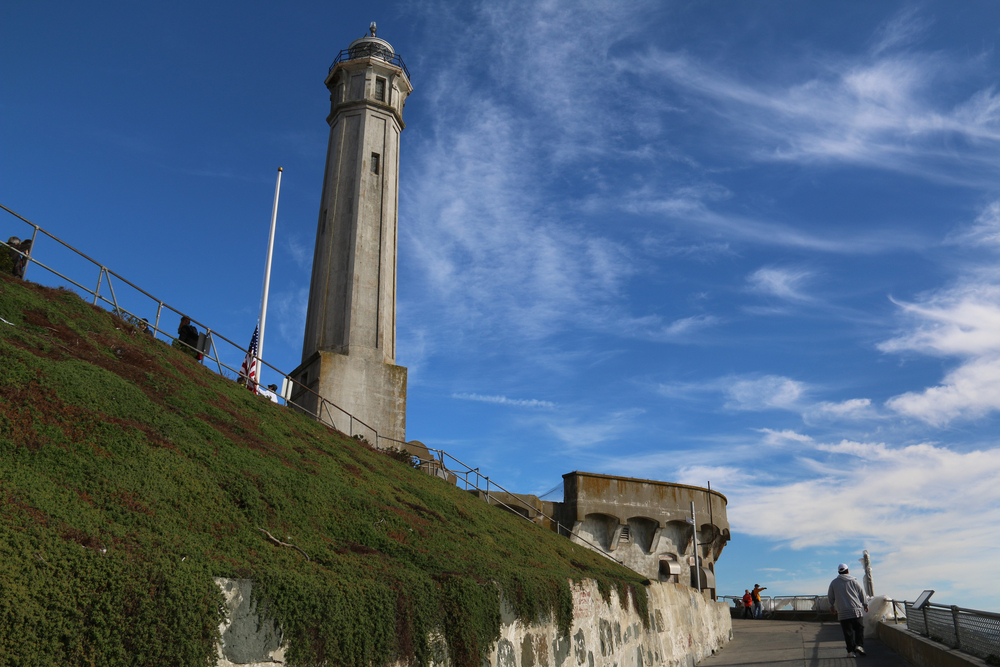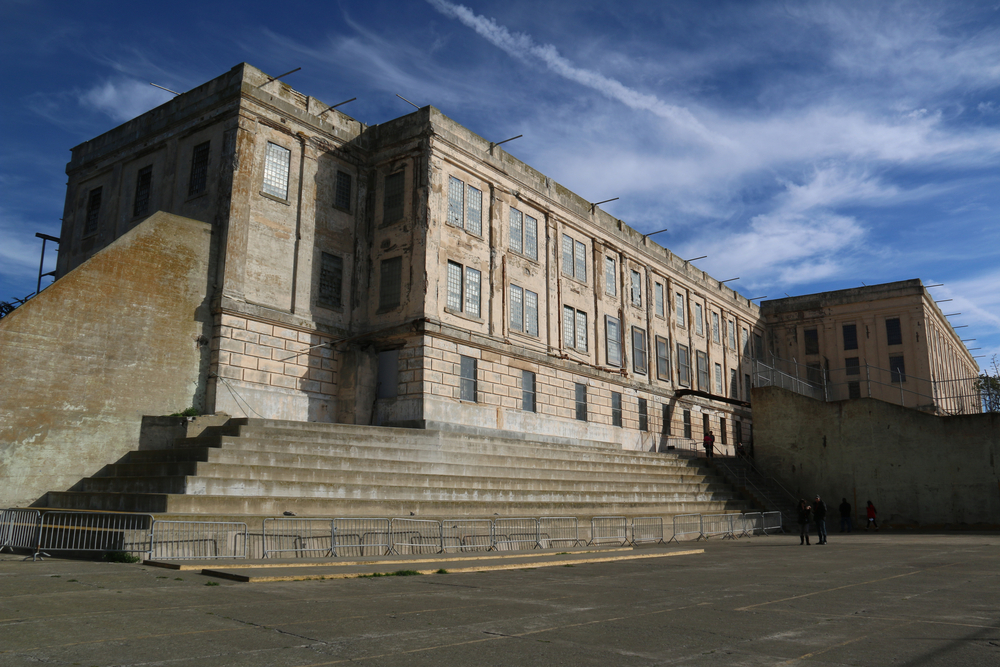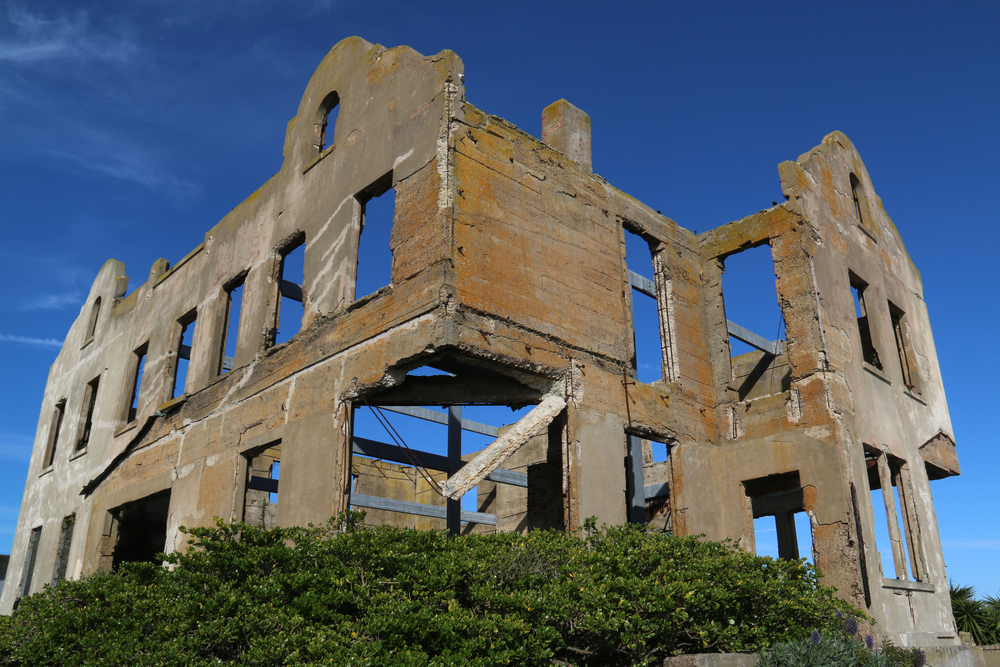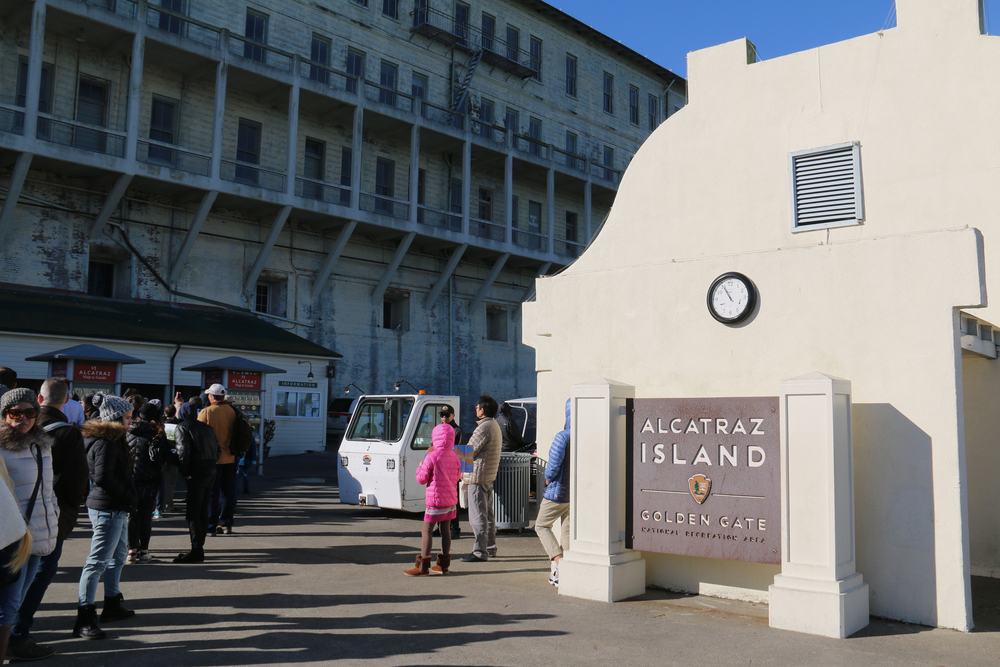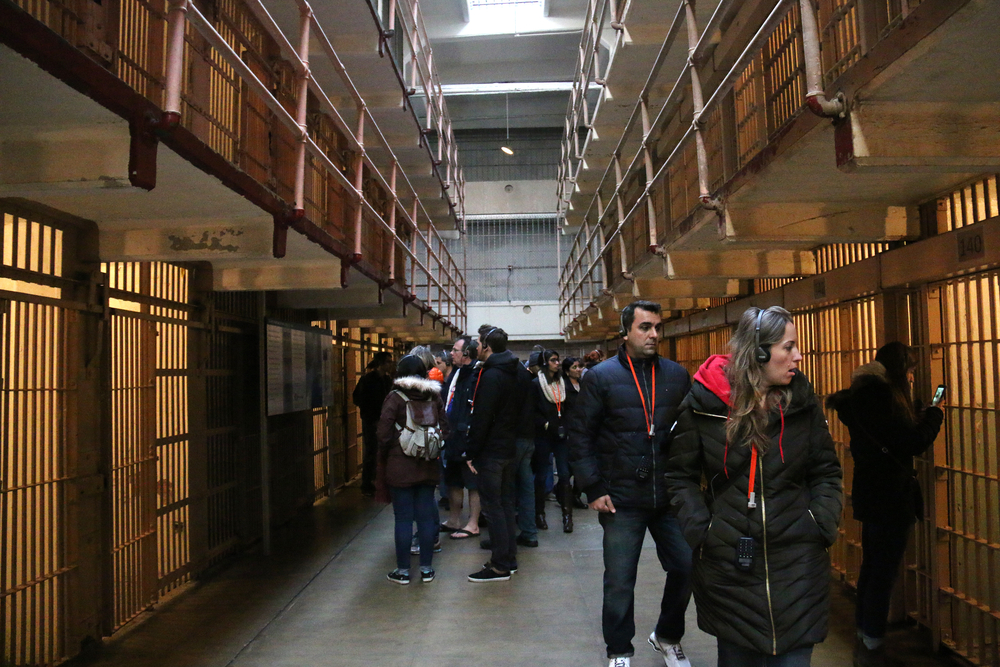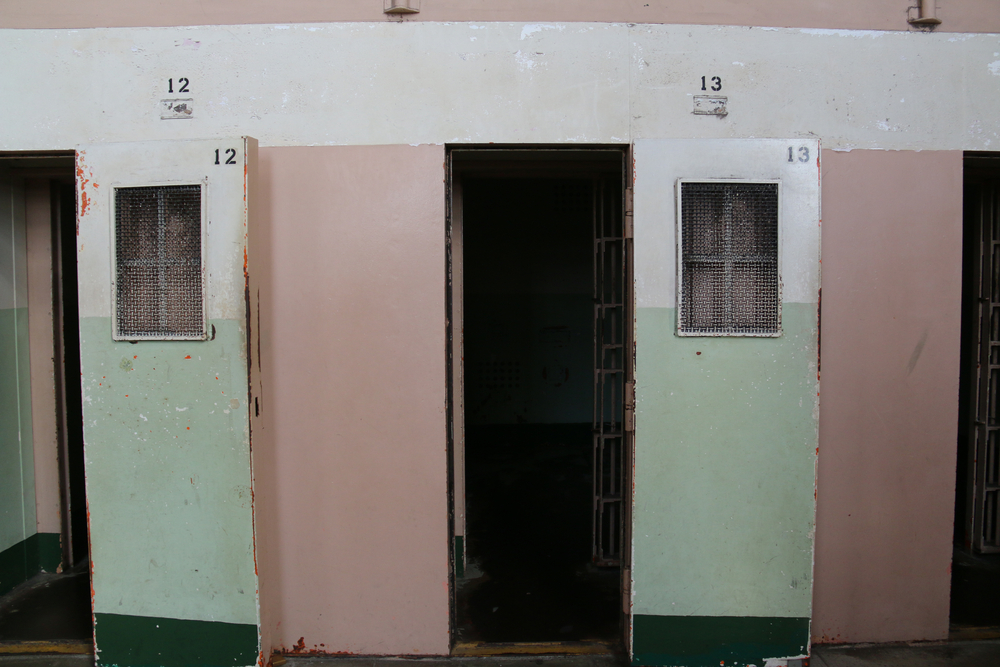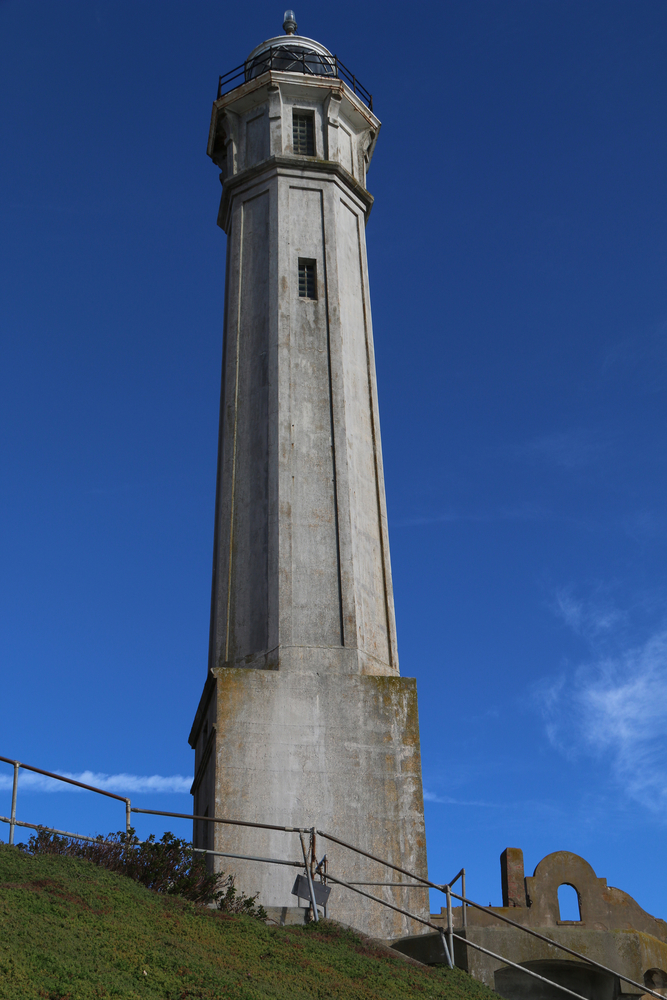Alcatraz Island near the San Francisco Bay provides a close-up glance at the area of the first lighthouse and US built fort on the West Coast, the notorious federal penitentiary long off-limits to the public, and the history making 18 month occupation by Indians of All Tribes. Much of the architectures were burnt down during the Indian Movement but the prison remains nowadays and opens to the public. Apart from the rich historical background, there is also a natural side to the Rock—tide pools, bird colonies, gardens, and bay views in contrast. (Copyright: City of Angels)
San Francisco, California, USA – December 23, 2015: Alcatraz Cruise is the nation’s first hybrid ferry, the eco friendly vessel powered by solar panels, wind turbines, and grid electricity.
San Francisco, California, USA – December 23, 2015: Throughout the penitentiary era, new guards lived in this building, and most could not wait to get out and move into newer staff quarters.
San Francisco, California, USA – December 23, 2015: Alcatraz Island, developed with facilities for lighthouse, fortification, prison, is a national recreational area and a National Historic Landmark.
San Francisco, California, USA – December 23, 2015: Throughout the penitentiary era, new guards lived in this building, and most could not wait to get out and move into newer staff quarters.
The Warden’s House, burned down during American Indian Movement Occupation, was home of the wardens of the state penitentiary on Alcatraz Island.
San Francisco, California, USA – December 23, 2015: The June 1962 Alcatraz escape was the only successful escape in the facility by slowly widened ventilation duct openings in their cells’ walls.
San Francisco, California, USA – December 23, 2015: Tourists are listening to audio tour from their headphones about history of Alcatraz Island.
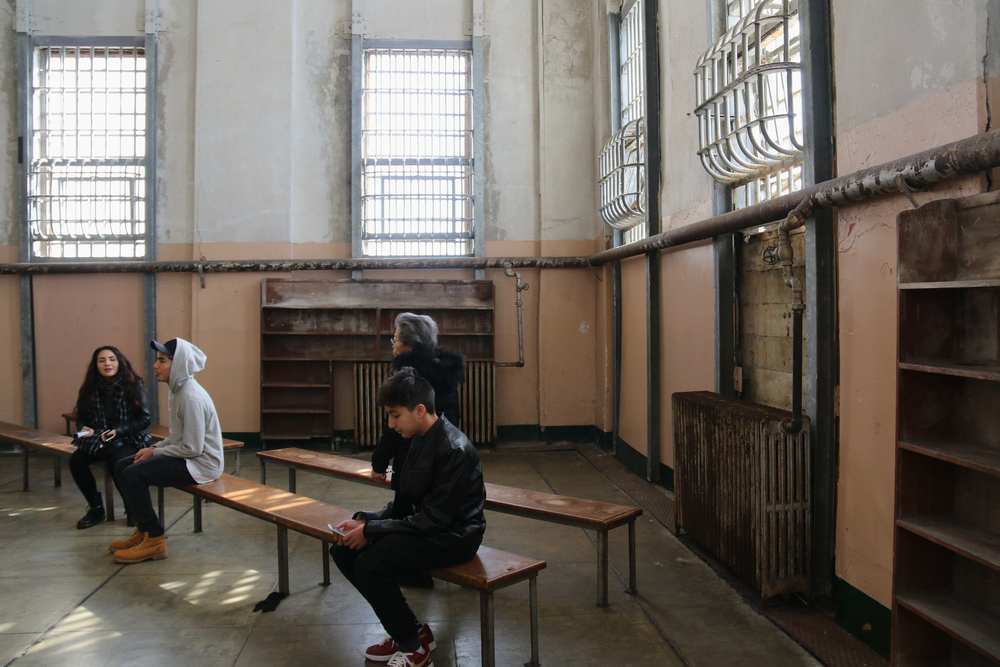
San Francisco, California, USA – December 23, 2015: The prison library at Alcatraz was where prisoners found mental escape through books and got some knowledge and entertainment during the capture.
San Francisco, CaA, USA – December 23, 2015: D-Block or Treatment Block, devoid of light and colder than the rest of the prison, was reserved for isolation of dangerous inmates at Alcatraz Island.
San Francisco, California, USA – December 23, 2015: Tourists are listening to the officer who is greeting and suggesting about what to see and do on Alcatraz Island.
San Francisco, California, USA – December 24, 2015: San Francisco is a popular tourist destination known for its cool summer, fog, steep rolling hills, eclectic mix of architecture.
Alcatraz – An Island’s History
By Darcia Helle
Alcatraz, the small island in San Francisco Bay, received its name in 1775 from the Spanish explorer Juan Manuel de Ayala. He christened the land La Isla de los Alcatraces, which translates to Island of the Pelicans. He had no interest, as it was uninhabited, barren ground with minimal vegetation and treacherous, icy currents.
Having little to offer, Alcatraz was left on its own for another 72 years. In 1847, the U.S. Army claimed the island for use as a military fortification. Within a year, U.S. Army engineers were hard at work constructing both a military fortress and the Pacific Coast’s first operating lighthouse.
Once completed, the fortress of Alcatraz became a symbol of military strength. Its features included long-range iron cannons and four 36,000 pound, 15-inch Rodman guns, which were capable of sinking hostile ships as much as three miles away. While the image of Alcatraz lived up to its reputation, the only round ever shot came from one 400-pound cannon. This was aimed at an unidentified ship, which it missed. Within 20 years, the rapid modernization of weaponry rendered Army defenses on Alcatraz obsolete. Soon the Army began rethinking uses for their island.
The natural isolation made Alcatraz the ideal location for an Army penitentiary. In 1861, the island began its 102-year history of housing prisoners, first as an Army penitentiary, then as a Federal prison.
Alcatraz was the Army’s debut as a prison for long-term sentences. Civil War prisoners were the first to arrive. The population remained small until 1898, when the Spanish-American war brought the prisoner count from 26 to more than 450. In 1906, a catastrophic earthquake in San Francisco forced the city to evacuate hundreds of prisoners to Alcatraz. The large influx of prisoners forced building expansion. By 1912, a large, three-story cell house had been constructed on the island’s central crest. The structure had almost reached full capacity by the late 1920s.
Rising operation costs led the military to close Alcatraz in 1934. Ownership of the island was handed over to the Department of Justice.
During the late 1920s and into the 1930s, the Great Depression brought an excessive crime surge. The combination of Prohibition, massive unemployment, and desperate need fostered a new era of gangsters and organized crime. This new breed of criminals had taken over large cities. Ordinary prisons were not doing a good job of keeping them behind bars. The federal government needed an “escape proof” prison, where they could lock away the worst of these bad guys. On Alcatraz, the government found exactly that.
In April 1934, contractors began work to turn the military prison into a maximum-security Federal prison. This new and improved Alcatraz was designed to hold no more than 300 prisoners. Only those convicted of federal crimes were sent to Alcatraz. These crimes included bank robbery, kidnapping, income tax evasion, draft dodging, and murders related to these crimes. The Federal prison on Alcatraz was designed strictly as a holding pen with no rehabilitative intents.
Few prisoners were sent directly to Alcatraz when sentenced at court. Inmates found their way to the island through behavior problems and escape attempts. Getting transferred out of Alcatraz was even more difficult. Parole was not an option. Inmates first had to earn their way to a different prison through good behavior.
James A. Johnston, the first of four wardens at Alcatraz, made the rules. He insisted on one guard for every three prisoners. The average ratio in other prisons at that time was one guard for every 10-13 prisoners. The inmates had no commissary. No newspapers were allowed; their reading material was censored and extremely limited. They had no television and radio was banned until the mid 1950s. Inmates received no counseling and were not offered any classes or groups to join. Recreation was severely limited. Boredom was an ongoing and extreme problem for both the inmates and the prison guards.
Prisoners were allowed one visit per month, which first had to be approved by the warden. These visits lasted approximately 1 1/2 hours and were conducted through glass with the use of a telephone.
The most controversial of Johnston’s rules was the “Silent System”. Conversation of any sort between prisoners was forbidden. The prisoners were deprived of even the most basic human contact. Several inmates were reported to have gone insane due to this policy. Over the years, the silent system became too difficult to enforce. Four long years later, the policy was abandoned and never reinstated.
Alcatraz Federal Prison consisted of 336 cells in three cellblocks. The main corridor – dubbed Broadway – held 168 cells and stood three tiers high. Broadway offered little privacy for the inmates, as this area received the most foot traffic. However, cellblock D was by far the worst area in the prison.
Called the special treatment unit, this area was also referred to as isolation, segregation, and solitary. Five of the cells on the bottom tier earned the nickname “The Hole”. Each cell contained a sink, a toilet, and a low-wattage light bulb strung from the ceiling. The solid steel door had a small insert that opened in order to push the prisoner’s food through. Inmates were provided with thin mattresses for sleeping but those were removed during the day. No form of entertainment was provided or allowed. The prisoner was cut off from all human contact, suffering extreme boredom and isolation.
The strip cell was reserved for particularly difficult inmates. This was a dark, steel-encased cell with no bed, sink, or toilet. The door was solid steel that remained closed at all times. Prisoners were stripped naked and placed inside with no blankets or light. The “toilet” was a hole in the floor. A thin mattress was provided for sleeping hours, then taken away. This cell was a cold, foul, black void that was feared by even the most hardened criminals.
Time in “the hole” was not supposed to exceed 19 days and time in the strip cell was limited to two days. This standard, however, was not always adhered to. Reports were made of prisoners driven insane by the extreme sensory deprivation of the hole and the strip cell.
In its 29 years as a Federal prison, Alcatraz held 1,576 prisoners. During that time, 14 escape attempts were made by a total of 36 inmates. Of those, 21 were returned alive, two were returned and executed, seven were killed by gunfire, and one drowned and his body washed ashore.
Five prisoners, from two separate escape attempts, managed to get off the island. Ralph Roe and Theodore Cole disappeared in 1937 and Frank Morris and Clarence and John Anglin disappeared in 1962. Despite nationwide manhunts, none of these men were ever found and no bodies were recovered. Much controversy exists to this day as to whether any or all of these men made it out of the water alive.
Alcatraz’s structure began to deteriorate. By the 1950s, the salt air had corroded the metal and concrete. Around 1961, the power plant began to fail, causing electrical blackouts. Plumbing pipes were cracked and major structural repair was required. During 1960-1961, the Bureau of Prisons spent $300,000 on renovations. An estimated $4 million more was needed.
Repairs were not the only factor in the high maintenance costs of Alcatraz. Because of its isolation, supplies, including water, had to be trucked in. This meant that even everyday expenses were much higher. The cost per prisoner was almost three times higher at Alcatraz that at other U.S. prisons.
By the time of the last escape attempt in 1962, the decision to close Alcatraz had already been made. Construction had begun on the U.S. Penitentiary at Marion, Illinois, the replacement for Alcatraz. On March 21, 1963, the last 27 prisoners were transferred from the island prison. Alcatraz officially closed in June of 1963.
Aside from a caretaker and his wife, Alcatraz remained a desolate place while various parties lobbied the government with development ideas. Nothing came of these ideas. Then, in 1969, a large group of American Indians landed on Alcatraz. A relatively unknown treaty with the U.S. government in the 19th century allowed Native Americans to claim abandoned Federal property. Using this treaty, the group claimed Alcatraz as “Indian Land”.
The Indians had an elaborate plan for transforming Alcatraz, which included an educational Native American cultural center. Public support quickly grew, with high-profile advocates from show business as well as the Hell’s Angels. This was both a blessing and a curse. The volume of visitors to the little island quickly grew overwhelming. Sadly, Alcatraz soon became a haven for the homeless and derelict population.
Before long, the Indians faced the same problems that stymied the prison administration; the total absence of natural resources and the enormous expenses. A series of difficulties culminated in a fire on June 1, 1970 that burned down what had been the Warden’s home, the lighthouse keeper’s residence, and the officers’ club. The Indian community fell apart. Approximately one year later, on June 11, 1971, Federal Marshals removed the remaining occupants from Alcatraz.
In 1972, Congress created the Golden Gate National Recreation Area, which included Alcatraz. The island opened to the public in the fall of 1973. Today Alcatraz is one of the most popular National Historic Parks, with more than one million visitors landing there each year.
Darcia Helle is a published author of mystery/suspense fiction. An avid reader and writer, Darcia immerses herself in all things crime.
Go to http://www.QuietFuryBooks.com to learn more about Darcia and to read her free monthly nonfiction newsletter Guilty As Charged.
Article Source: http://EzineArticles.com/expert/Darcia_Helle/318056
http://EzineArticles.com/?Alcatraz—An-Islands-History&id=3828179










